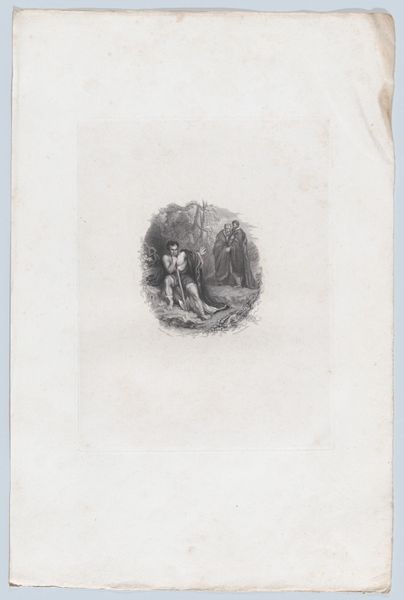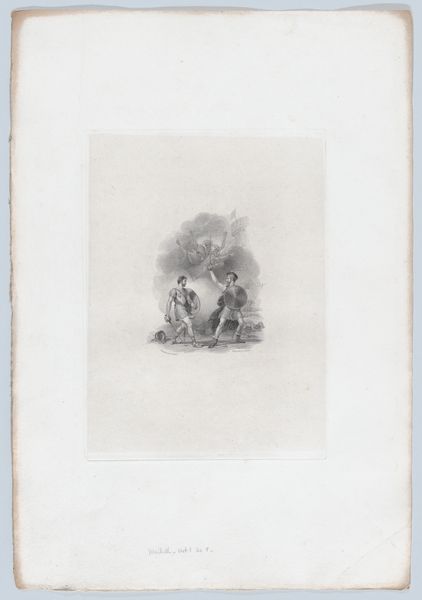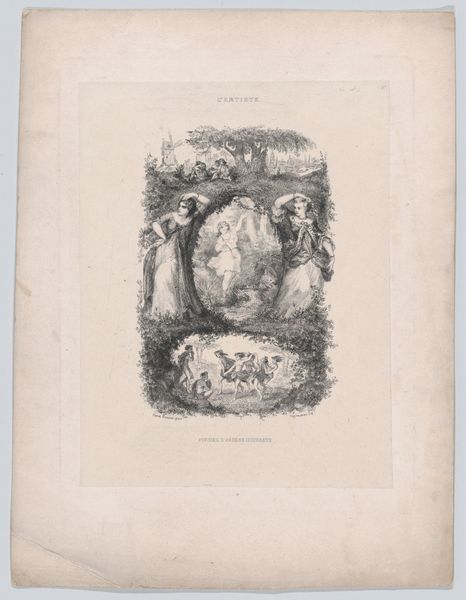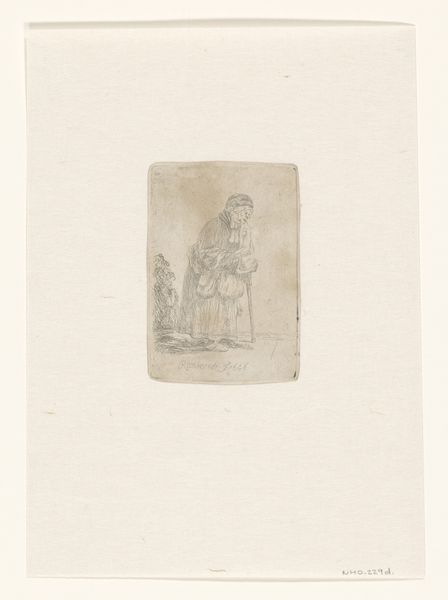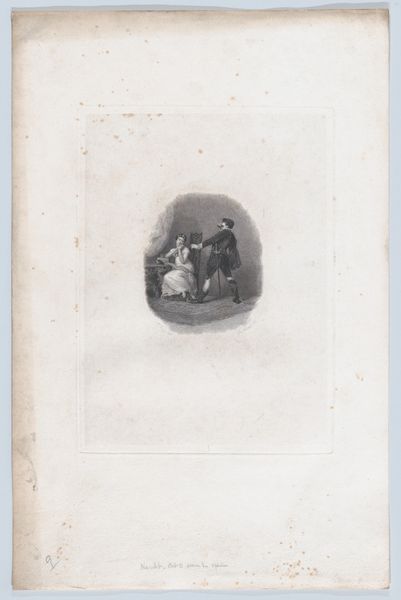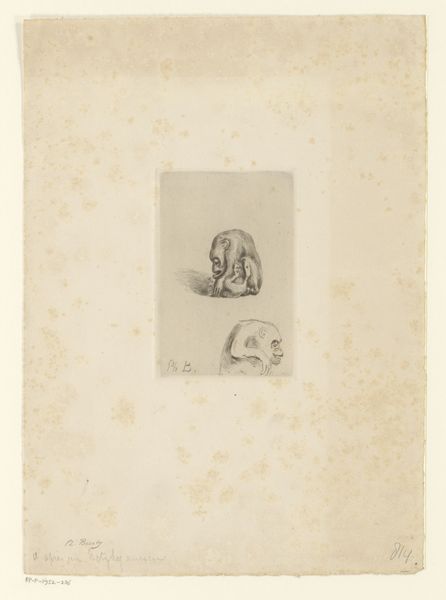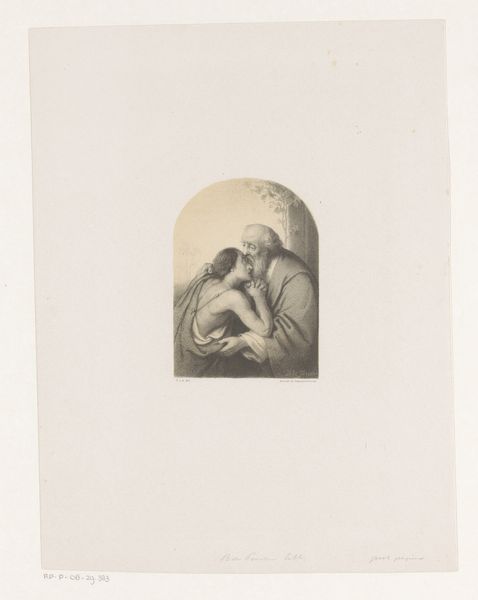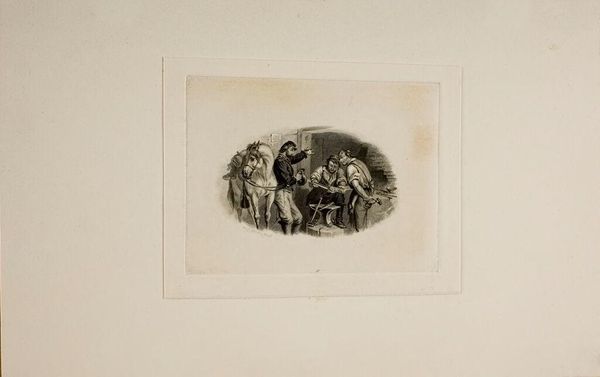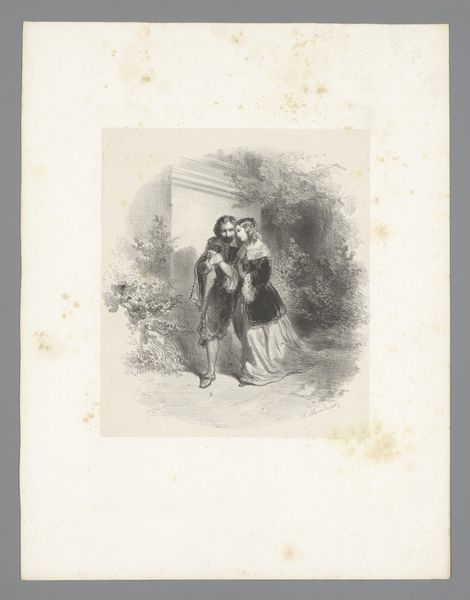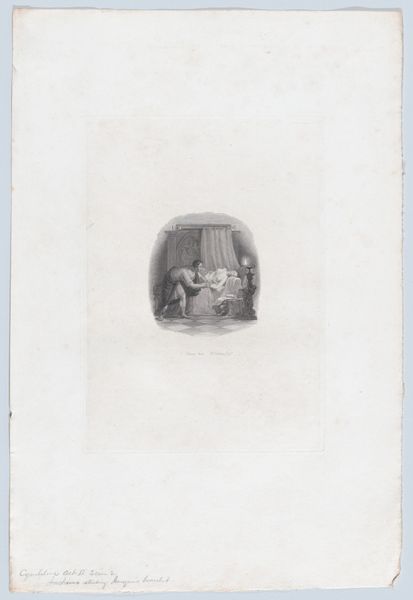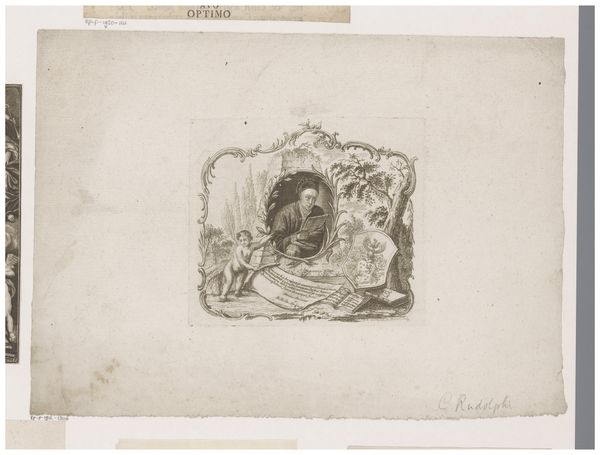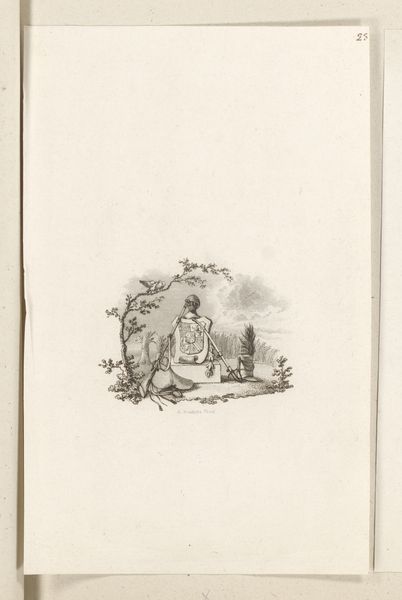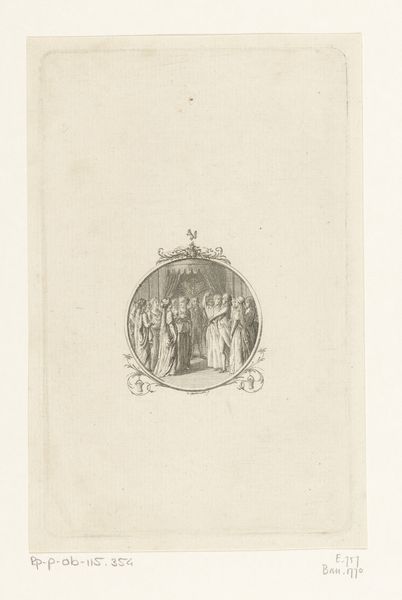
Dromio, Adriana and Luciana (Shakespeare, Comedy of Errors, Act 4, Scene 2) 1827
0:00
0:00
drawing, coloured-pencil, print, paper, engraving
#
portrait
#
drawing
#
coloured-pencil
# print
#
paper
#
coloured pencil
#
romanticism
#
genre-painting
#
history-painting
#
academic-art
#
engraving
Dimensions: Plate: 9 3/8 × 6 7/8 in. (23.8 × 17.5 cm) Sheet: 17 1/8 × 11 5/16 in. (43.5 × 28.8 cm)
Copyright: Public Domain
Curator: Let’s delve into this print from 1827, titled "Dromio, Adriana, and Luciana (Shakespeare, Comedy of Errors, Act 4, Scene 2)", by Charles Pye Jr. Editor: My first impression is of a theatrical staging, almost as if a scene from a play is caught in time. The composition is simple, yet the poses are so dramatic, emphasizing gestures, costumes, and body language. The scale is intimate. Curator: Exactly, it captures a moment of confusion and misunderstanding. We need to recognize how depictions like these, reproduced as engravings for wide distribution, cemented interpretations of Shakespeare's narratives and reinforces class and gender expectations, especially around marriage and female identity. Look how the women are passively leaning into each other for comfort while Dromio strikes a dramatic pose for their consideration. Editor: I'm curious about the material conditions surrounding prints like this. Engravings were a relatively accessible means of reproducing images, making art available to a broader audience. Pye’s technical skill here highlights how craft could be used to democratize visual culture, creating a marketplace where scenes from high literature were consumed by the rising middle class. The paper stock itself has a materiality; think of the social world each piece creates and occupies. Curator: And beyond consumption, these images instructed. These prints helped circulate ideas about correct comportment, desirable relationships, even colonial expectations, reflecting the Romantic period’s entanglement with imperial power structures. We can see the beginnings of the role the arts have in teaching specific performances of identity to broader populations of viewers. Editor: Yes, thinking about production shifts the focus. For instance, the tonal gradations in this piece show sophisticated methods. Curator: Absolutely, it is interesting that an audience of women would expect a certain level of artistry and would use such artwork for education or conversation. The act of art consumption was performative in itself. Editor: Considering that, looking at how "high art" meets this popular audience gives insights into the work and lives involved in getting imagery out there. Curator: These insights allow for reevaluation of both art history and cultural reception with deeper complexity and intention. Editor: Precisely, material concerns bring historical context and lived experiences to art consumption practices.
Comments
No comments
Be the first to comment and join the conversation on the ultimate creative platform.
